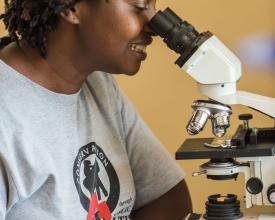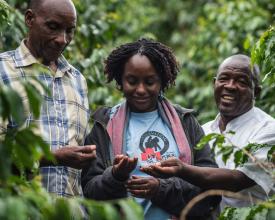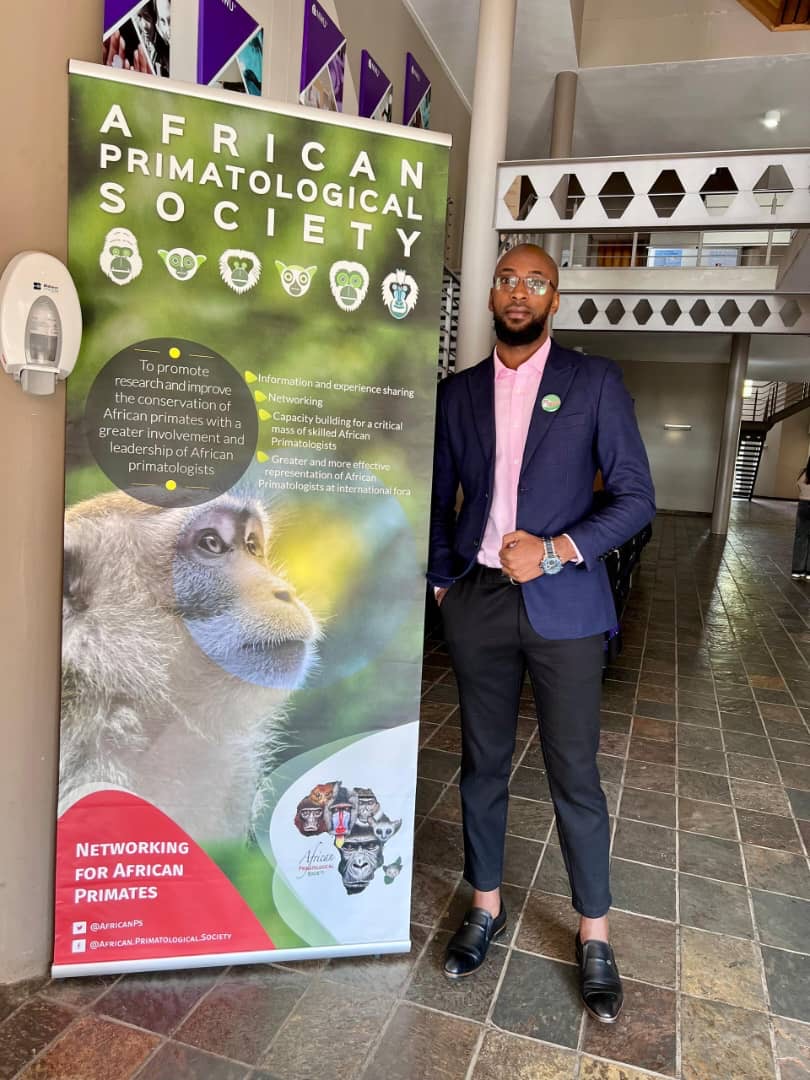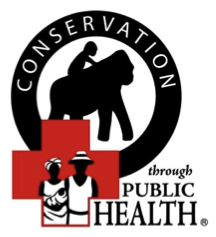
Mitigating Zoonotic Disease Transmission with a One Health approach to Gorilla Conservation and Gorilla Tourism

Uganda's Gorilla tourism started in 1993. Concerns about disease transmission from humans to the great apes were quickly raised. In Bwindi Impenetrable National Park, the first scabies outbreak in 1996 resulted in the death of an infant gorilla. The disease was traced back to people, in this case to the local communities living around the National Park.
Mountain gorillas are endangered, with only 1,063 individuals remaining in the wild. Conservation Through Public Health (CTPH) was founded by Dr. Gladys Kalema-Zikusoka, with the mission to promote biodiversity conservation by enabling people, gorillas and other wildlife to coexist through improving their health and livelihoods in and around Africa’s protected areas.
CTPH has extensive experience implementing One Health approach in protected area management, and we are committed to sharing our lessons learned and recommendations with other countries facing similar issues.
Context
Challenges addressed
- Susceptibility of Gorillas, Chimpanzees and other great apes to human disease
- Inappropriate tourism marketing that increases potential for risky behaviours rather than reinforcing risk mitigation
- Limited knowledge of great ape tourism rules that puts great apes at risk from infectious diseases
- Inadequate capacity to manage cross species disease outbreaks
- Climate, economic and social vulnerability affecting local communities increases the risk of disease outbreaks that can be transmitted to endangered great ape populations
- Limited access to health services and information in remote communities surrounding the national parks leads to poor health, hygiene and sanitation, increasing risk of zoonotic disease transmission
- Marginalisation and high levels of poverty amongst communities surrounding great ape habitats drive illegal forest activity and bush meat poaching, placing great apes at risk directly as well as from increased risk of contact to human diseases
- Habitat loss due to high human population growth
Location
Process
Summary of the process
CTPH’s One Health model is founded on the belief that biodiversity conservation must go hand-in-hand with improvements to the health and wellbeing of communities. As such, CTPH implements a three-pillared strategy which includes: 1) Improving Gorilla conservation through research conducted in a timely manner. This includes monitoring gorilla health and enabling a rapid response if any infections are detected; 2) Improving health amongst marginalised community members by engaging community volunteers to provide health and conservation services and information at the household level. This improves improves health, hygiene and sanitation and reduces illness, thereby also reducing risk of transmission of zoonotic diseases to the mountain gorillas; and 3) Supporting alternative livelihoods amongst impoverished community members surrounding gorilla habitats. In so doing, CTPH helps to reduce dependence on natural resources to meet basic needs of food and fuelwood, and reduces threats to mountain gorillas, other wildlife and their habitats by addressing key drivers of poaching and illegal activity – poverty and hunger. All of these pillars are supported by long-term partnerships with the government and NGOs.
Building Blocks
Research conducted in a timely manner
Before the COVID-19 pandemic, students from the University of Kent and Ohio University conducted research with CTPH on the impacts of mitigation measures to avoid disease transmission to great apes and on the willingness of the National Park’s visitors to comply with these measures. Their findings were published in 2018 and 2020 and have been instrumental in convincing the Ugandan government to adopt sanitary measures in the Parks for tourists and management staff, while reassuring the Uganda Wildlife Authority that this decision wouldn’t impact the number of visitors coming to the park.
CTPH also conducts routine research to monitor the health of the mountain gorilla population, focusing on those which stray out of the forest into communal land most often or those that have been habituated for gorilla tourism and, as such, are more likely to come into contact with human infections. This routine health monitoring and research is conducted by observing for clinical signs and collecting gorilla faecal samples (non-invasively, from gorilla night nests) each day and analysing the samples for pathogens, particularly those of zoonotic significance. By doing so, CTPH has developed an early warning system for any concerning infections and can address these as needed in a timely manner.
Enabling factors
- Willingness of the health monitoring team and researchers to conduct the studies
- Mutual interest in the outcome of the research study
- Government and Uganda Wildlife Authority’s (UWA) support of the research, aided by good working relationships between CTPH, UWA and other government departments
- Current context of the COVID-19 pandemic leant relevance and urgency to the findings and encouraged rapid adoption of safer Great Ape viewing guidelines, in line with the findings
Lesson learned
- Working closely with relevant government institutions enables more effective conservation efforts
- Involving academia in conservation projects through long-term partnerships allows for obtaining timely results on key issues for decision-making
- Evidence based research lends legitimacy to advocacy actions
Village Health and Conservation Teams (VHCTs)
CTPH has been implementing a successful community health and conservation model in BINP since 2006. Community health is implemented through Village Health Teams, a recognized Ministry of Health structure in Uganda who are trained as Village Health and Conservation Teams (VHCTs) to promote health together with conservation. VHCTs are local community volunteers who deliver integrated community based services to individual households to promote good health-seeking behaviour, hygiene practices, infectious disease prevention and control, family planning, nutrition; and conservation education. VHCT networks are sustained through group livestock income generating projects, which they reinvest into Village Saving and Loan Associations (VSLAs). CTPH focuses particularly on engaging women, both as VHCTs as well as during VHCT activities, as women are primarily responsible for their families’ health and wellbeing and are, therefore, in the best position to make positive changes for improved household health. As VHCTs, women have taken on a leadership role in the community, elevating their status and supporting improved gender balance.
CTPH successfully scaled up the VHCT and VSLA model from Kanungu to another district, Kisoro around BINP, home to the world’s endangered mountain gorillas.
Enabling factors
- Community respect for, and trust in, CTPH
- Non-salary financial incentives help to sustain community volunteer efforts more sustainably
- Support from Ministry of Health enabled ‘piggy backing’ on existing VHT structures to incorporate both conservation and health issues
Lesson learned
- Working through existing structures helps to increase sustainability
- Peer-to-peer behaviour change communication is an effective means of communicating key information in a context where communities are remote and literacy is low
- Household based health service delivery, including of family planning, supports greater uptake in remote settings where health service access is otherwise low
- Community volunteers gained respect and status of fellow community members
- Integrating health and conservation issues, in a One Health community-led peer education program, enabled maximisation of resources, providing savings in the long term.
Alternative livelihoods
CTPH provides alternative livelihoods for our VHCTs, which include group livestock income-generating projects and Village Saving and Loan Associations that bring them together and strengthen the integrated approach. As community volunteers work without a salary this is a critical component to creating a sustainable program and resulted in no volunteer dropouts within the first 10 years of the VHCT program.
CTPH, through its social enterprise – Gorilla Conservation Coffee established in 2015, also supports alternative livelihoods for community members, to support income generation and, thereby, reduce dependence on natural resources to meet basic needs. Gorilla Conservation Coffee supports coffee farmers living around BINP through training and capacity building and providing access to national and international markets. Women coffee farmers are particularly encouraged to participate in the social enterprise, providing a source of economic empowerment for women in communities in which the financial sphere is particularly biased towards men. The social enterprise was created with support from Worldwide Fund for Nature Switzerland’s Impact Investment for Conservation Program. A donation is also given for every bag of coffee sold, to support CTPH’s programs, enabling sustainable financing for conservation.
Enabling factors
- Partnerships with experts in the coffee industry ensure Gorilla Conservation Coffee is of the highest quality (including being included in the top 30 coffees in the World in the 2018 Coffee Review)
- A growing trend of lifestyle of health and sustainability (LOHAS) consumers
- Effective branding and marketing support expansion of market, locally and globally
- Global distribution partners support wide availability of Gorilla Conservation Coffee around the World
Lesson learned
- Increased incomes of coffee farmers engaged in Gorilla Conservation Coffee creates major incentive for others wanting to join Gorilla Conservation Coffee
- Providing viable alternative livelihoods for smallholder coffee farmers and community members reduces reliance on natural resources to meet basic needs, reducing threats to endangered mountain gorillas and their habitat
- Lifestyles of Health and Sustainability (LOHAS) consumers are willing to pay more for a high-quality product which is ethically and sustainably produced and has a cause
- Increasing liquid revenue is key to being able to increase quantities of coffee purchased, including being able to stock pile, to meet larger orders and re-invest additional profit into the social enterprise
Long-term partnerships with the government and NGOs
Since establishment, CTPH has cultivated strong partnerships with government and other stakeholders, including other NGOs and the private sector. This ensures that CTPH’s work is in line with government priorities and strategies, is supported by the Government and aligns with other stakeholders. This was particularly important during the COVID-19 pandemic when the Government of Uganda instituted a strict ‘no movement’ lockdown to minimise spread of infection. Recognising that CTPH’s work is critical to the survival of Uganda’s mountain gorillas and the livelihoods dependent on them, the Government granted CTPH special permission to continue its One Health activities.
CTPH’s advocacy activities are more successful due to the ongoing close working relationship that CTPH maintains with government institutions. This includes calling for park rangers and other conservation personnel to be amongst the priority groups for COVID-19 vaccination, primarily because of their close contact with Uganda’s endangered great apes which are highly susceptible to human respiratory diseases and because their survival is not only critical for biodiversity conservation but also for the Ugandan economy. CTPH also successfully advocated for the adoption of more stringent great ape viewing guidelines.
Enabling factors
- Routine communication and dialogue with relevant government personnel and departments as well as NGO and CBO partners
- Regular and early stakeholder engagement that extended to academia and the private sector
- Respect for CTPH and Gorilla Conservation Coffee amongst government departments, NGOs, tour operators and other private sector stakeholders as well as research institutions
Lesson learned
- Engaging stakeholders early, during project design and planning stages, is mutually beneficial and helps to ensure projects align with government and organisational strategic directions and priorities
- Acknowledging government and other stakeholder support and input in external communication maintains trust
- Joint proposal development helps to align priorities and allow for easier scale up and lesson learning
Impacts
The impacts of implementing a One Health approach are the following:
- Significant improvement in the general health of local communities living in and around Bwindi Impenetrable National Park;
- Significant improvement of the general health of the mountain gorilla population living in Bwindi, and no death from COVID -19;
- Significant increase in voluntary family planning uptake amongst local communities living in and around Bwindi Impenetrable National Park, reducing pressure on both natural and household resources
- The CTPH model of One Health was evaluated by international research institutions, as having truly contributed to conservation and sustainable development outcomes in Bwindi
- A policy brief, including clear recommendations for safe great ape viewing, based on research proven outcomes, was compiled by CTPH and the International Gorilla Conservation Programme. It was endorsed by the Government of Uganda, partner NGOs in conservation and public health, and shared with the 13 other countries in Africa which have great ape tourism;
- Improved awareness of, and adherence to, safer great ape tourism guidelines.
Beneficiaries
- Great ape populations living in the BINP
- Local communities adjacent to BINP
- Uganda Wildlife Authority and BINP management in particular
- Tourism operators organizing great ape viewing tours in BINP
Sustainable Development Goals
Story
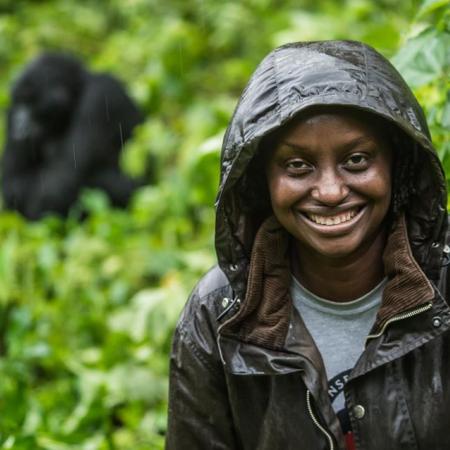
Dr. Gladys Kalema-Zikusoka started CTPH in 2003 in response to a scabies outbreak amongst the mountain gorillas, which were critically endangered at the time, of Bwindi Impenetrable National Park, where she was working as Uganda’s first wildlife vet. The scabies outbreak led to the devastating death of an infant gorilla and several others required treatment to ensure their survival. Dr. Gladys and her team traced the outbreak to local communities living on the outskirts of the park, where access to health services was very limited and health, hygiene and sanitation were poor. Recognising that gorilla conservation could not be successful without effectively engaging and improving the health and wellbeing of the local communities, Dr. Gladys established CTPH to implement a One Health model to gorilla conservation. The first of its kind in Uganda and with little acknowledgement of such approaches worldwide at the time, Dr Gladys had to overcome many challenges in early days of CTPH. This included major funding challenges as donors tended to want to fund either conservation approaches or health projects – but hers operated at the intersect of both.
Today, however, in the wake of the COVID-19 pandemic which brought global attention to the interconnectedness of wildlife and human health and the major risks of not addressing them together, One Health approaches have gained recognition and momentum. Whilst this has brought significant attention to Dr. Gladys’s One Health approach, her priority – protecting the world’s endangered mountain gorillas of which there remain only 1063 in the world, remains the same. Dr. Gladys is passionate about ensuring that the world’s mountain gorillas are protected and that the One Health approach, which provides better outcomes for people, wildlife and habitats, continues to be scaled up to benefit more people, landscapes and animals.


